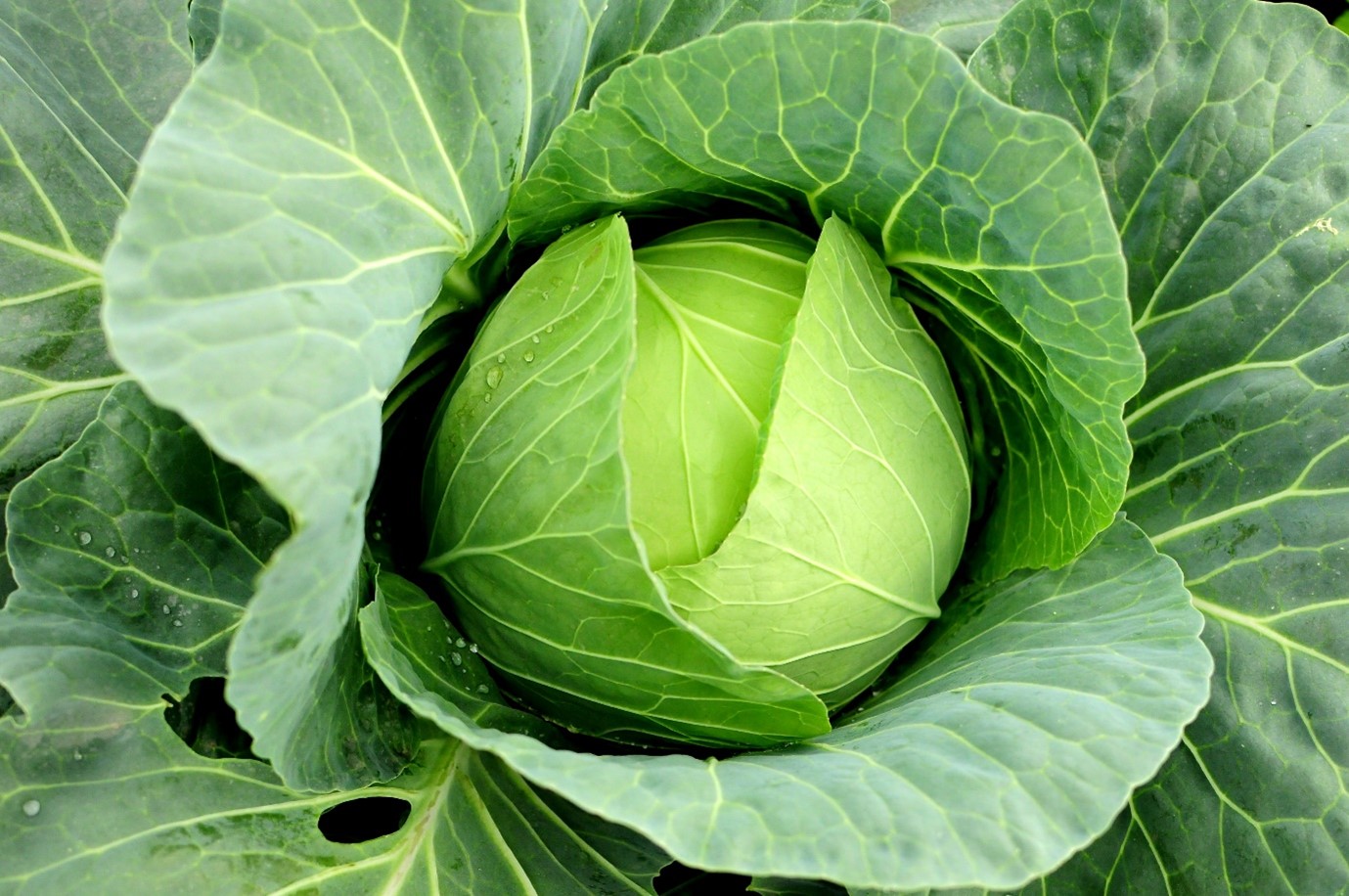
1. BACKGROUND
Cabbage is a common Cole crop grown in all areas of Limpopo Province and is scientifically known as Brassica oleraceae var. capitata. Cabbage may be grown in an open field or inside shade net for all year-round production.
2. SOIL AND CLIMATIC REQUIREMENTS
Cabbage prefers well drained loamy soils, with a pH between 5,5 to 6,8. Cabbage is mainly a cool season crop. The optimum temperature for growth and development is on average approximately 18 ◦C with an average maximum of 24 ◦C and an average minimum of 4.5 ◦C. Cabbage has wide adaptability, and it can consequently be cultivated throughout the year although the summer crop has lower quality than the winter crop, thereby making cultivar selection a crucial step in growing cabbage.
3. CULTURAL PRACTICES
Soil preparation
The soil preparation for cabbages should be done 8 weeks prior to planting to help control weeds and nematodes and cutworms. The ground must be ploughed deeply immediately before planting with a disk harrow other suitable implement to obtain a good planting surface. Cutworm moths lay eggs on various weeds and the worms can cause extensive damage when clean cultivation is not applied. It is necessary to ensure that there is no impenetrable layer up to a depth of 450-600mm. For root-knot nematodes a soil fumigant should be applied 2 weeks before planting time, and this is especially critical in warmer months.
Planting
Cabbage should be planted at a population of 30 000 to 40 000 plants/ha for large head varieties and 60 000-100000 for baby cabbages. The recommended spacing 40-70 cm in rows and 60-90 cm between rows. Direct sowing should be preferably done during the cool moist months of the year. Transplanting should be done in moist soils. Under dry conditions the land must be irrigated shortly before transplanting.
The seedlings are planted in damp soils, pressed down firmly, and irrigated as soon as possible. Transplanting should preferably be done on cool and overcast days or late in the afternoon to achieve best results, however this might not be feasible when growing cabbage on a large scale.
Fertilisation
A soil pH of 5.5 to 6.8 (H20) is recommended. Cabbage is a strong feeder and requires adequate nutrients especially nitrogen. It is recommended that farmers should fertilise according to soil fertiliser recommendations from soil analysis results. Cabbages are extremely sensitive to the deficiencies of the two trace elements: Boron and Molybdenum.
Irrigation
It is critical to supply sufficient water immediately after sowing or transplanting. It is important for young plants to receive enough water for vegetative growth before head formation, because the bigger the plant at this stage, the larger the eventual head will be. Care should be taken not to put too much water once the heads have formed as this can cause them to crack.
Pests and Diseases
The common cabbage diseases include White rust, Black spot, powdery mildew, Fusarium yellows, Downy mildew, clubroot, diamond back moth, bacterial leaf spot, leaf spot and back rot. To disrupt life cycles on certain diseases it is important to rotate crops. An effort must always be made not to plant vegetables of the same family on the same land too often.
The common cabbage pests include aphids, cabbage diamond back moth, bagrada bugs, slugs, and worms. Pesticides, resistant/tolerant varieties, or natural enemies (beneficial insects) may be used to control cabbage pests and diseases. All pest control chemicals should be recommended by a crop adviser or chemical company representative and should be registered for use on cabbage through the registrar of Act 36 of 1947.
The label of the recommended should be read and instructions should be followed for each pesticide being applied by the farmer on the cabbage. The use of resistant or tolerant cultivars is encouraged when selecting a cultivar for a specific area and seed companies, nurseries and crop advisors should always be consulted.
4. CULTIVAR SELECTION
There is a wide variety of cabbage types to choose from depending on the reason for growing. Market research should inform cultivar choice, for example hawkers prefer large cabbages whilst some supermarkets prefer medium head cabbages. Large fresh market cabbage types include but not limited to Superslam, Optima, Grandslam, Conquistador, Bobcat and others. The red cabbages include red jewel and red rookie and are grown mainly for the salad market (supermarkets and restaurants).
REFERENCES
- Sakata sowing guide (2016) sakata.co.za
- Intelligro sowing guide (2024) intelligro.co.za
- Hygrotech vegetable production guide Hygrotech https://hygrotech.co.za

